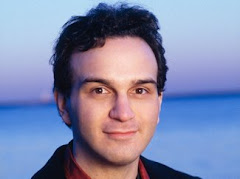Honoured guests to the DFP Hall, Stephen Hough and Mark Wigglesworth returned with a lovely Germanic programme of Beethoven and Brahms in March 2017.
Beethoven’s Fourth Piano Concerto is a very unique piece. It is special as the composer dispensed with the typical Classical concerto form of beginning with orchestral tutti and the piano solo following that. Stephen Hough’s interpretation of the opening statement was unusual, as he arpeggiated the opening chord that Beethoven wrote.
The first movement of the concerto, which is about half of the length of the entire work, is a wonderful example of the composer’s ability to create a theme and develop it so that it returns in various creative and compelling ways.
Hough and Wigglesworth adopted a very sane and stable tempo to allow the myriad notes and florid ornamentation that Beethoven wrote for this very lyrical concerto to come through clearly. Hough drew a bright tone out of the instrument, paying careful attention to every nuance. In the cadenza, Hough held the audience spellbound as he probed its dramatic depths.
In the short recitative-like slow movement often associated with the imagery of Orpheus taming the Furies at the gates of Hades, Wigglesworth insisted upon a very sharply dramatic sound from the MPO strings at a faster than normal tempo, answered here meltingly by Hough, using every opportunity given to him to produce a gentle tone of touching sweetness.
The third movement arises directly out of the second without break and develops into a bold and energetic rondo section. Hough is not prone to histrionics and he coaxed a wonderfully clean and clear sound from the piano. The finale generated plenty of excitement and jocular abandon. A marginal tempo surge at the end brought the concerto to a triumphant close. As an encore treat, Hough played for the capacity audience a gentle and reflective Träumerei (Dreaming) from Schumann’s Kinderszenen (Scenes of Childhood).
Wigglesworth then led the MPO through a lovingly played Brahms’ pastoral Second Symphony after the interval. Adopting very flexible tempi throughout the first movement, the opening has a dreamy atmosphere that grew more agitated as the rhythms became more martial-like.
The second theme of this movement played by the violas and cellos was especially enjoyable and provided a fresh contrast before returning to its first theme. Principal hornist Grzegorz Curyla made up for the blip in bar 183 by bravely playing a superb solo between bars 454 and 477.
The second movement that followed had a weighty passion as the cellos played the initial brooding theme. In contrast, the third movement showcased a playful oboe solo in its novel and changing 2/4 and 3/8 time meters.
An overloud brass chord that submerged the strings welcomed the bright and spirited fourth movement that drew us irresistibly into its exciting string and brass ending. This was generally a superb interpretation of the symphony, which Wigglesworth imbued with a lot of love and care in the musical details.
Subscribe to:
Post Comments (Atom)


















































No comments:
Post a Comment